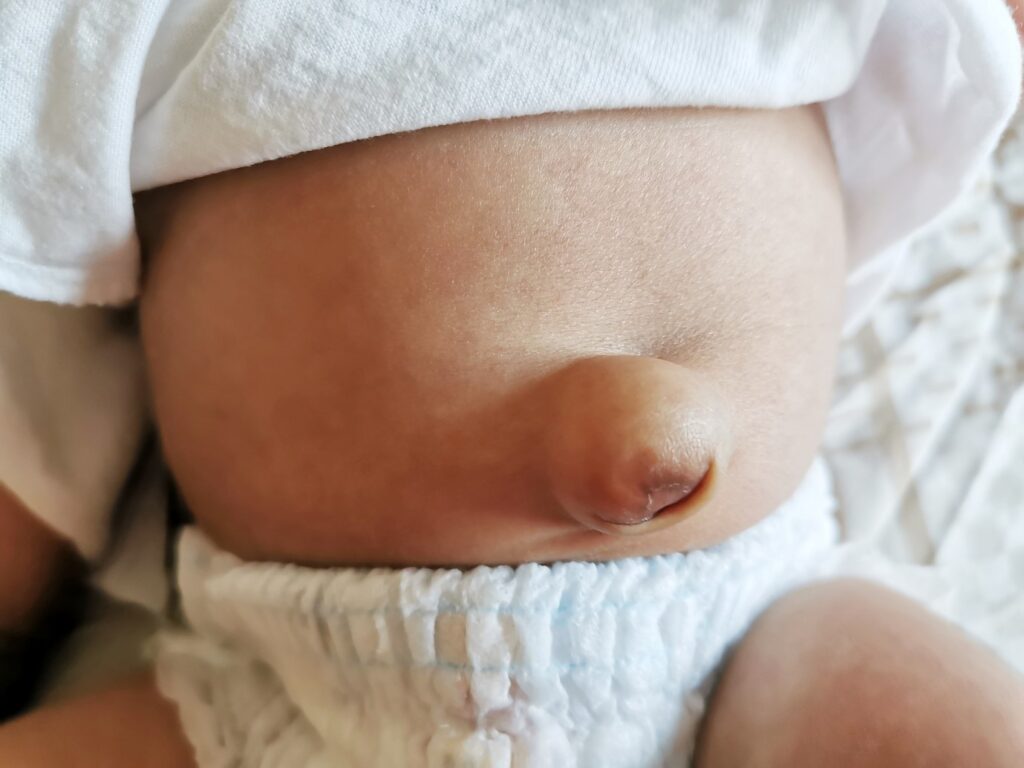Umbilical hernias are common and usually harmless, especially in children. However, they can lead to complications in some instances, particularly if the hernia becomes incarcerated or strangulated.
What Are the Complications of Umbilical Hernias?
While most umbilical hernias cause no problems, complications can arise if the hernia becomes incarcerated. This means the intestine or tissue becomes trapped and can’t be pushed back into the abdomen. This condition can compromise blood flow to the affected area, causing pain, tissue death, or infection.
A strangulated requires immediate treatment. Symptoms of a strangulated umbilical hernia include:
- Intense abdominal pain
- Fever, nausea, or vomiting
- Constipation
- Abdominal tenderness or redness
- A bulging lump near the belly button
If you notice any of these symptoms, seek immediate medical attention to prevent severe complications like tissue damage or infection.
How Are Umbilical Hernias Treated?
Most umbilical hernias in children close naturally by age 3 or 4. For adults or when complications arise, surgery is typically recommended. Surgery is usually considered when the hernia:
- Is it painful or causing discomfort
- Is larger than 1/2 inch in diameter
- Doesn’t resolve within 1-2 years (in children)
- Becomes incarcerated or obstructs the intestines
Surgical Procedure: During surgery, a surgeon will make an incision near the belly button and push the bulging tissue back into place. For adults, a mesh may be used to reinforce the abdominal wall before closing the incision with stitches. The procedure generally takes about an hour and is often done on an outpatient basis.
What is the Recovery Process After Surgery?
Recovery from umbilical hernia surgery is generally fast, though some precautions are mandatory. The procedure is typically done on the same day, allowing most patients to return home afterward. However, it’s important to limit activities for about a week and avoid heavy lifting for at least three weeks.
Post-Surgery Care:
- Follow your surgeon’s instructions on caring for the wound.
- Avoid intense physical activity for a few weeks.
- Contact your doctor if you experience any symptoms like fever, nausea, or hernia recurrence.
Most patients recover fully without complications, and the risk of recurrence is low with proper treatment.
Stay Informed and Take Action
If you or your child have an umbilical hernia, don’t wait for complications to arise. Early treatment and surgery can prevent serious risks and ensure a quick recovery. Speak with your doctor to learn about the best options for treatment and recovery today!

